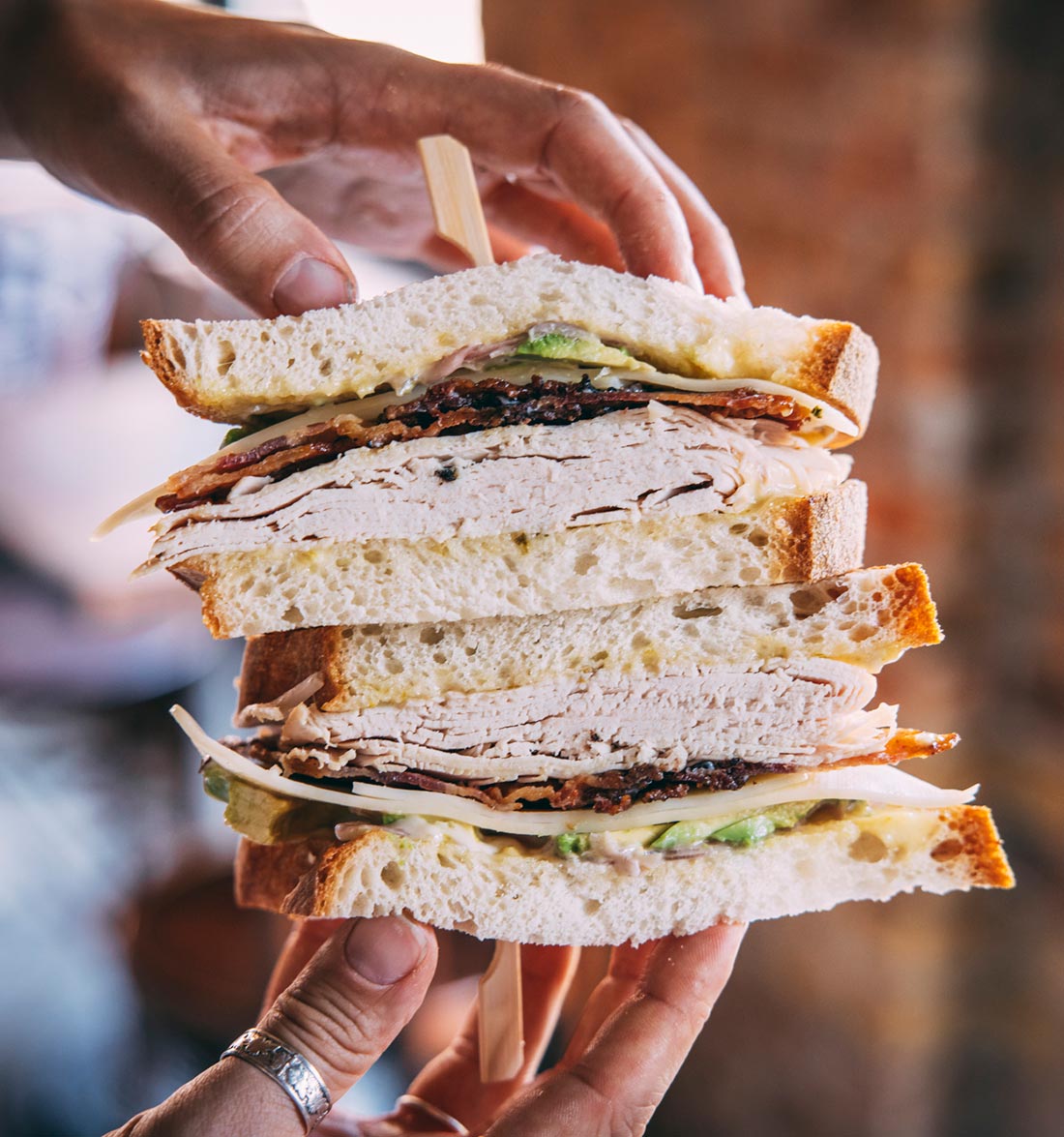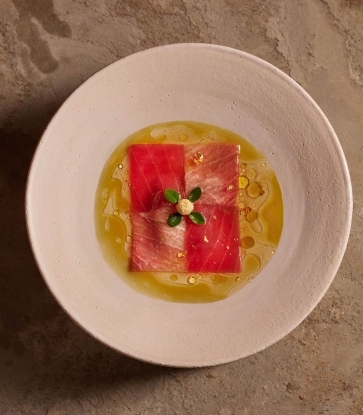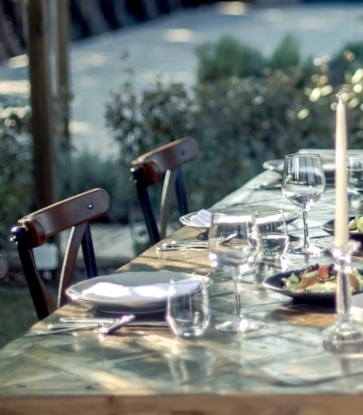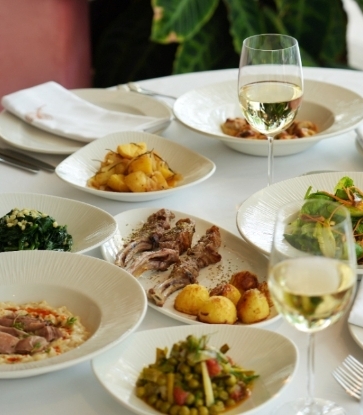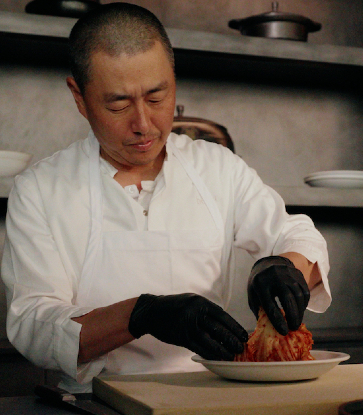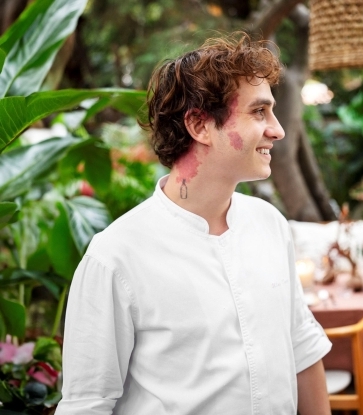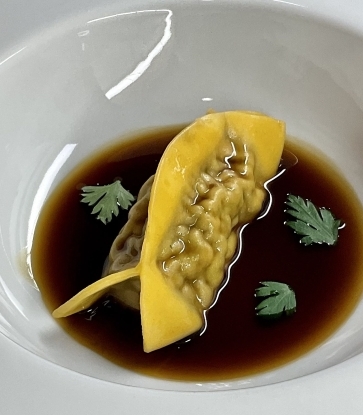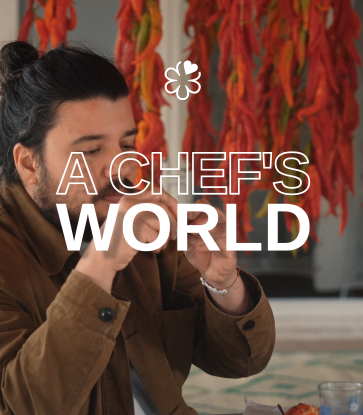In its most "classic" form, an Istanbulite meyhane stands out not for its interior design or luxurious details, but for always using very good ingredients and serving simple but ambitiously flavoured mezes. A wide variety of cold mezes are accompanied by hot mezes such as pastrami or cheese rolls, fried liver, shrimp casserole, and the main dishes are usually seafood-based.
Certainly, it is also possible to try new-style meyhanes which offer selections from distinctive cuisines of Türkiye or experimental dishes together with an interior design reflecting contemporary trends. However, meyhanes prioritizing cold and hot mezes should not be confused with ocakbaşı (open grill restaurants) offering kebabs and offal. While rakı is at the center for both, one goes to the ocakbaşı mainly to pair rakı with meat - with a limited option for mezes -. In contrast, in a meyhane, the main course is never a must, and you can have a very rich table even solely with mezes. Considering that many of the mezes consist of vegetables with olive oil, meyhanes are also a great option for vegans and vegetarians!
Despite everyone’s favorite mezes, starters and seafood may vary, there are certain generally accepted "must-haves" for a meyhane table. First of all, you need a very good quality white cheese. Be it Edirne or Çanakkale Ezine white cheese; a plate of hard, fatty, well-aged cheese is essential for a meyhane. In the right season, cheese should be accompanied by a slice of melon. “Topik” (a cold dish of mashed chickpea, tahini, onion and spices) and “lakerda” (cured bonito) are the king and queen of the table at an Istanbul meyhane. An excellent harmony will mark the table with the accompanying cold dishes such as glasswort with lemon and garlic, borlotti beans with cinnamon, deliciously cooked “fava” (mashed borad bean), “haydari” (a yoghurt based meze with herbs), mashed eggplant with yoghurt, “şakşuka” (eggplant, green pepper, onion with tomato sauce , “köpoğlu” (sautéed eggplant, pepper, garlic, tomato sauce and yoghurt); olive-oil based dishes such as rice stuffed leaves, artichokes or green beans, and - as a final touch - seafood, for example dried mackerel salad, sea bass marinade, and tarama.
In some new-style meyhanes, mezes with flavors from Türkiye’s southern regions such as “muhammara”, “hummus”, and spicy paste, are now on the menu. Likewise, some innovative meyhanes add different touches to classic flavours by creating dishes such as “fava” with turmeric or artichoke stuffed with caramelized onions. But all agree on one point; mezes and seafood are the superstars in a meyhane.
Some renowned meyhanes stand out with their special mezes. For instance, Giritli’s Cretan-style pickles and sardines wrapped in vine leaves, Eleos’ goat cheese with roasted peppers and curry octopus, Karaköy Lokantası’s fish pastrami and cabbage rolls with chestnuts, Sofyalı 9’s grilled okra and eggplant octopus are some rare, signature flavors that cannot be found everywhere…
So, if you are going to a have a first-time experience in a meyhane, what should you consider and how should you pick among dozens of mezes? First of all, it is customary to order cheese (or a cheese meze), an eggplant-based meze, a yoghurt-based meze, a vegetable-based cold dish prepared with olive oil, a seafood dish, and a legumes-based meze. For instance, white cheese or Cretan-style cheese paste, eggplant salad with roasted peppers or eggplant paste, “haydari” or tzatziki, rice stuffed leaves with olive oil or celery with orange and olive oil, “lakerda” or octopus salad, “fava” or borlotti beans… As Turkish rakı pairs well with sour tastes, completed with red beet pickle or mixed pickles, that would be a premium table. While 4-6 meze plates are sufficient for two, with more to go at a more crowded table, such a composition will also go well with all kinds of hot starters and main courses.
Is Turkish rakı a necessary accompaniment to this combination? For those seeking an authentic meyhane experience, the answer is yes. The distinct flavors of sourness, garlic, onion, and spice found in traditional meyhane dishes are specifically designed to complement the strong aniseed flavor of Turkish Rakı. However, if you are not fond of aniseed or find Rakı to be too potent, you can still create a delightful wine pairing experience in a meyhane. Opt for a selection of mezes, seafood, and fish that will beautifully complement well-chilled white wines. It is advisable, though, to avoid yogurt-based mezes when opting for this combination.
If some in your group prefers to drink rakı, while others go for wine or cocktails, or yet again if you’d like to dine in a more contemporarily designed restaurant compared to the classical meyhanes, you might opt for venues offering more while keeping their function as a meyhane. For instance, with its wide wine menu besides its variety of dishes, Karaköy Lokantası appeals to diners who want a classic rakı table as well as to others who prefer to pair wine with seafood and red meat, while combining the experience with an extremely contemporary and stylishly designed ambiance that also reflects the spirit of Istanbul.
Our Istanbul selection comprises over 50 restaurants. Take the opportunity to peruse the MICHELIN Guide app and find out more.
Illustration image // Ercüment Usluer / Sofyalı 9





